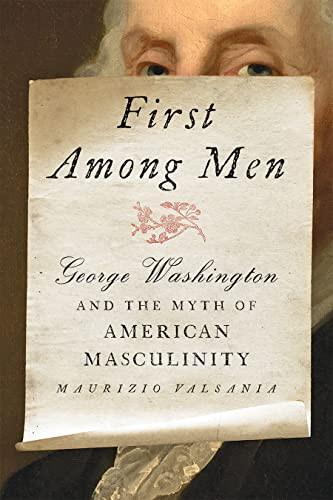2018 School Spending Survey Report
First Among Men: George Washington and the Myth of American Masculinity
COPY ISBN
 Valsania (American history, Univ. of Turin; Jefferson’s Body) deconstructs the masculine mythos of George Washington and contrasts the imagined one-dimensional Washington (who often appeared cold and emotionless) with the more complex one (who was often quite open with his emotions, especially in his letters). The book argues that the stoic, aggressive, muscular Washington of the public imagination was solidified posthumously, in stories, songs, and paintings (e.g., Emanuel Leutze’s Washington Crossing the Delaware) created in the 19th century as the United States expanded in size, power, and stature. These images of masculinity were associated with positions of dominance—over rival powers, enslaved people, Indigenous peoples, and women; the image of a Washington surrounded by submissive and subservient people became an image of the nation itself. Valsania’s delving chapter on 18th-century American dress veers at times from the central thesis, but as a whole the book masterfully deconstructs popular myths, revealing that ostensibly immutable ideas about masculinity—and about the U.S. itself—can easily fall apart under a historian’s examination.
Valsania (American history, Univ. of Turin; Jefferson’s Body) deconstructs the masculine mythos of George Washington and contrasts the imagined one-dimensional Washington (who often appeared cold and emotionless) with the more complex one (who was often quite open with his emotions, especially in his letters). The book argues that the stoic, aggressive, muscular Washington of the public imagination was solidified posthumously, in stories, songs, and paintings (e.g., Emanuel Leutze’s Washington Crossing the Delaware) created in the 19th century as the United States expanded in size, power, and stature. These images of masculinity were associated with positions of dominance—over rival powers, enslaved people, Indigenous peoples, and women; the image of a Washington surrounded by submissive and subservient people became an image of the nation itself. Valsania’s delving chapter on 18th-century American dress veers at times from the central thesis, but as a whole the book masterfully deconstructs popular myths, revealing that ostensibly immutable ideas about masculinity—and about the U.S. itself—can easily fall apart under a historian’s examination.
VERDICT Will appeal to scholars and general readers interested in popular conceptions of Washington and American masculinity.
RELATED
ALREADY A SUBSCRIBER? LOG IN
We are currently offering this content for free. Sign up now to activate your personal profile, where you can save articles for future viewing




Comment Policy:
Comment should not be empty !!!